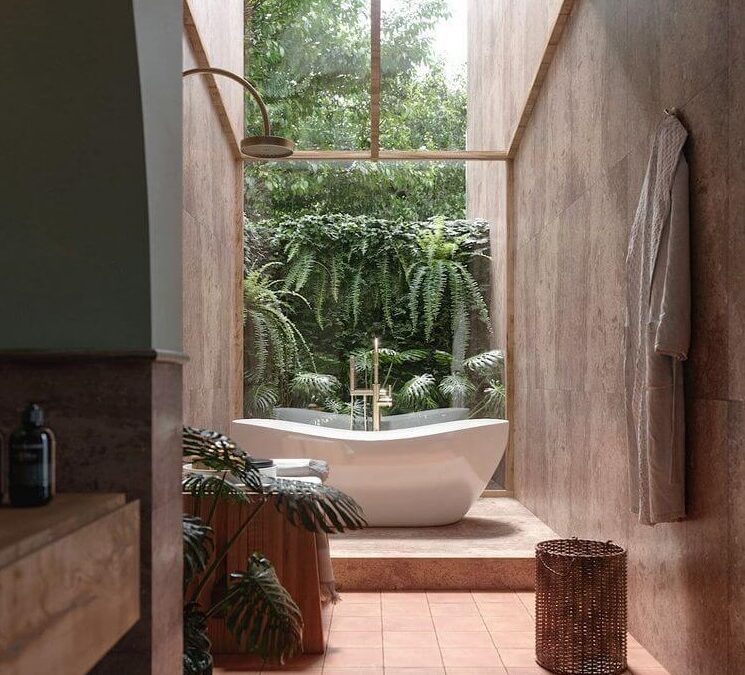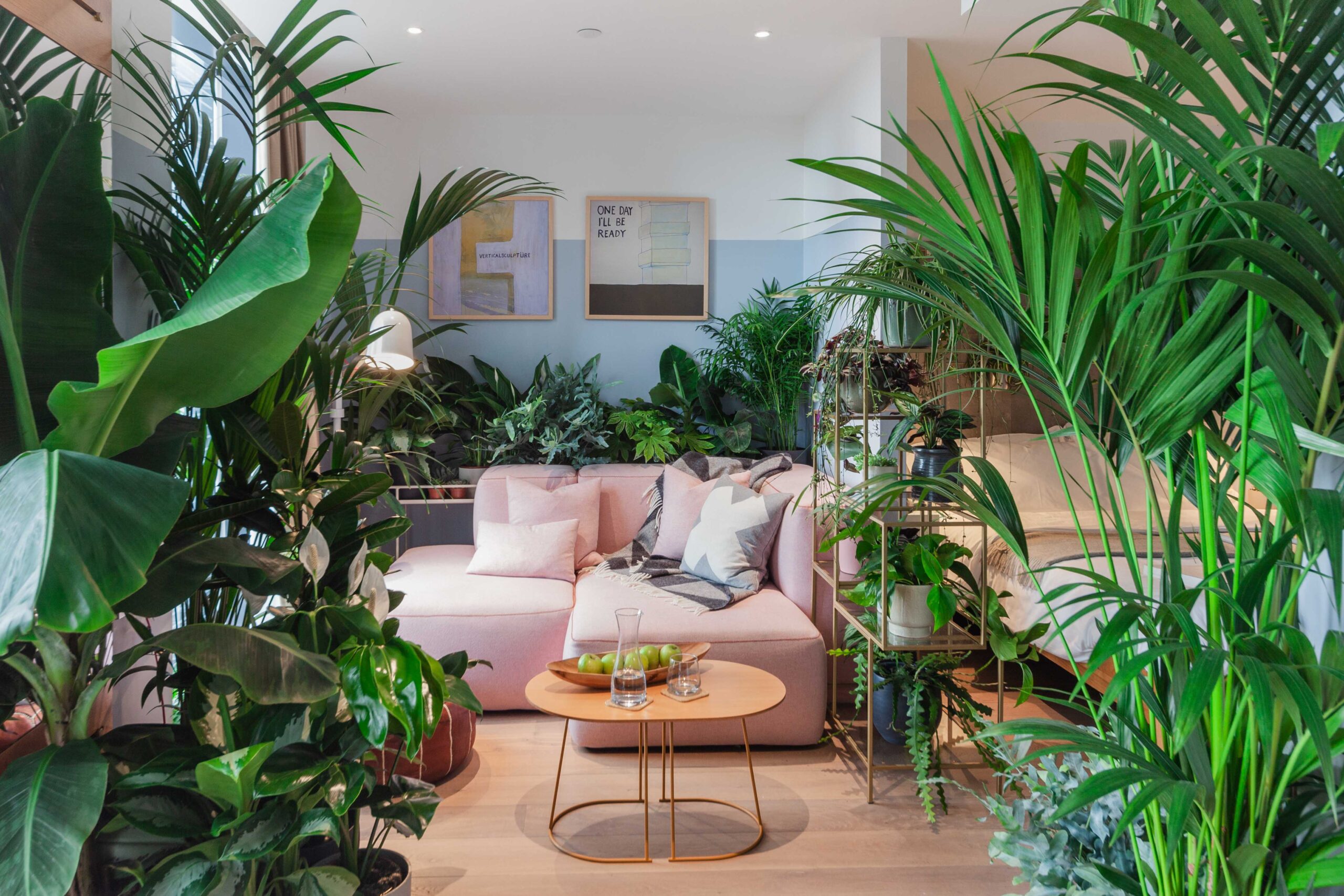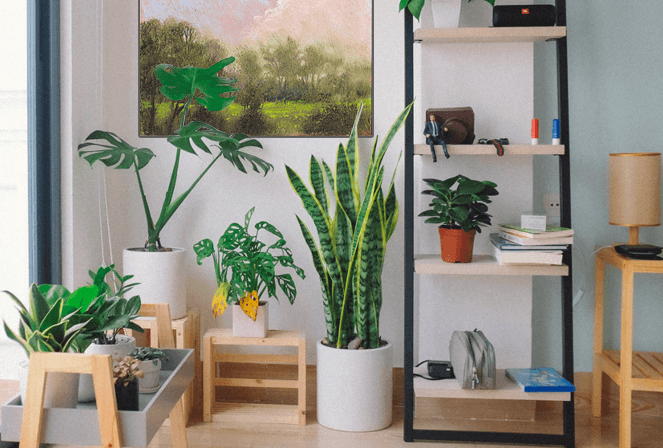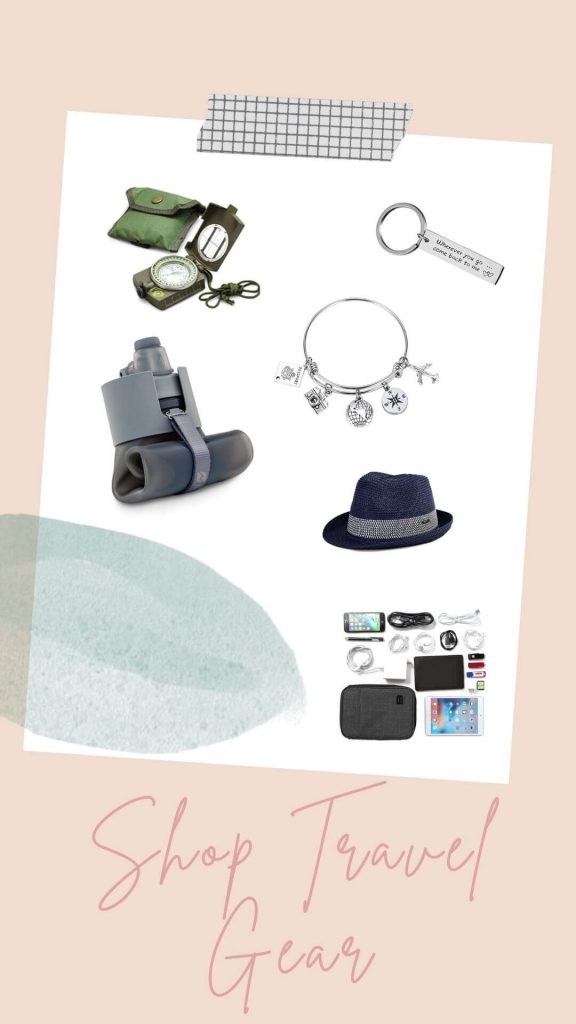Biophilic design is a global trend that has been recognized by house owners and designers all over the world in recent years. It is the sudden push toward nature-inspired interiors, incorporating nature or natural-looking objects in the home. This has resulted in multiple interesting design ideas, such as water therapy, illuminated mirrors, rain showers, wellness baths that emit a peaceful ambiance, diffused aromatic oils, and heated flooring which have proven to be some of the most common and effective features in these biophilic bathrooms.
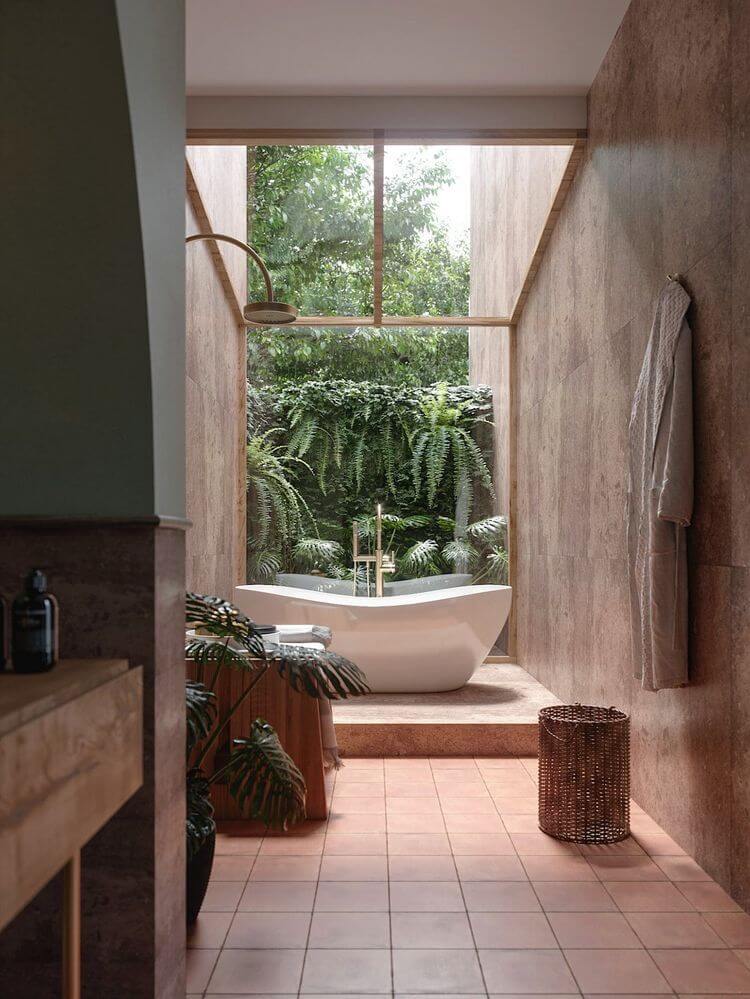
Image Credit @theconcretejungle
Now let’s discuss five different ways you can have a biophilic bathroom.
Add Some Plants
Adding some plants is the most simple and obvious method to incorporate nature into the bathroom. Plants soften the lines of harsh surfaces and give a pleasant dose of nature along with purifying the air. If you don’t want plants to take up a lot of space in your bathroom, you can easily accomplish this with the use of hanging plants, small potted plants to keep on your sink, a living wall, or even an outside plant collection seen via a glass wall.
To reduce excessive care, use plants like the heartleaf philodendron, spider plant, aglaonema, or the maidenhair fern.

Image Credit : Hannah Puechmarin via Apartment Therapy
Use Natural Materials
Natural materials are another key component of biophilic design. Organic materials such as wood, stone, marble, and ceramic provide the illusion of a naturally created bathing place indoors. Incorporating items made of bamboo, linen, terracotta, or wood will immediately give your bathroom that biophilic feel.
Many of these are ideal for the bathroom since they are water-resistant and can survive a humid environment. Don’t worry about the tapware as chrome, brushed nickel, and even matte black are excellent choices for tapware that compliments natural components.
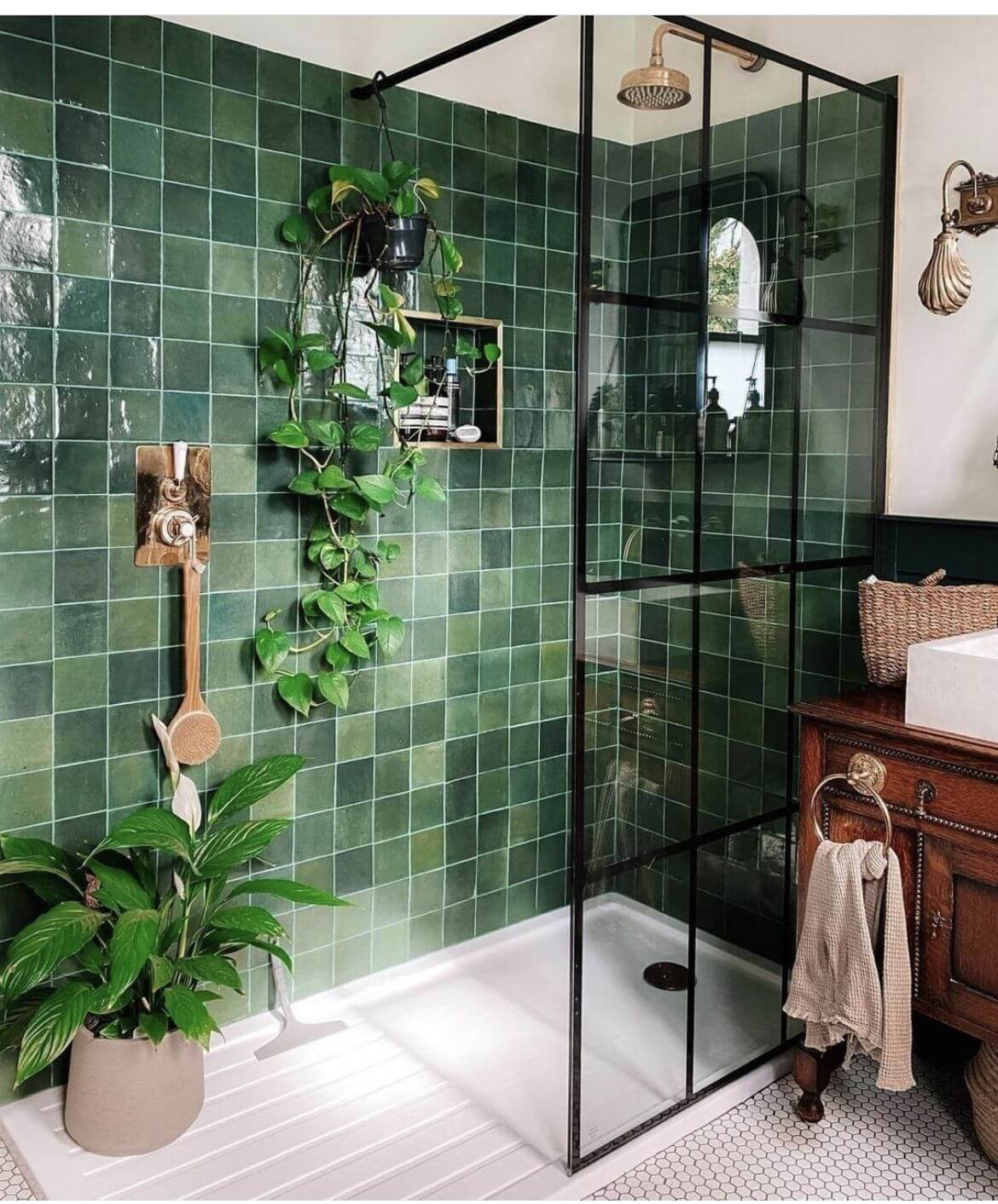
Image Credit : Pinterest
Choose Earthy Tones & Colors
Have you ever wondered why white is such a popular choice as a bathroom color? It’s the best bet because of its sanitary and clean associations. However, bright white, which is often associated with toilets, is the only color that does not exist in nature!
Earthy browns, warm greens, amber, and mild dull blues are ideal for establishing an indirect link to nature. However, you might also draw inspiration from your favorite natural settings or events, such as a gorgeous blush pink summer sunset or the deep blue glacial lakes, or the earthy warm red mountains.
Integrate Texture and Shapes
The goal of biophilic environments is to create a place that incorporates design elements such as organic textiles, patterned tiling, rough unfinished walls, and light. Keep in mind that in nature, straight lines and straight angles are exceedingly rare. When used correctly, these elements can help to reduce tension by creating a more aesthetically pleasing environment.
A biophilic bathroom can have decorative elements inspired by trees, waves, wings, and seashells, as well as patterns based on flowers, leaves, and animal skins.
Incorporate Natural Patterns
Who doesn’t enjoy patterned walls or rugs? Have you considered adding some of nature’s repeated patterns into your environment, particularly your bathroom? Some of the most stunning natural patterns are leaves, waves, and designs found on animal skins.
Take inspiration from these naturally occurring patterns and incorporate them into your house, whether it’s through a honeycomb wall shelf, a shower divider with waves on it, or even some good old animal print towels.
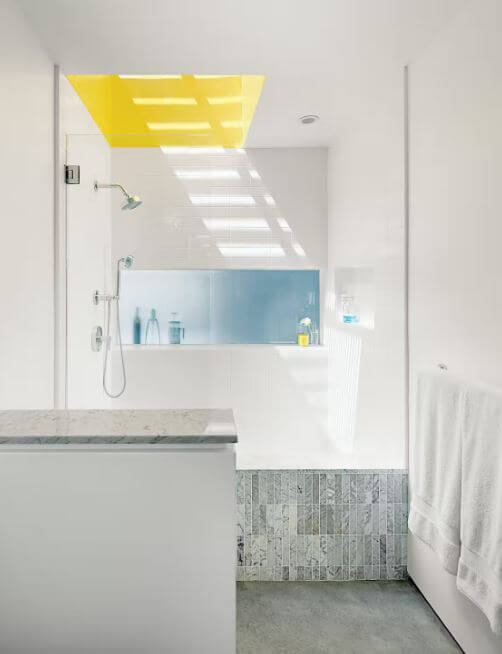
The duplex in Venice, California, designed by Don Dimster featured in Dwell for his brother and himself, is a fantastic illustration of how biophilic design concepts and ideas may be utilized in a bathroom. When it comes to designing biophilic habitats, natural light is crucial.
This house in Venice, California, features three sources of natural light in its principal bathroom: a skylight, a tiny window, and a translucent glass wall shared with the kitchen.
It should come as no surprise that biophilia and biophilic spaces have been shown to improve human health and well-being. The bathroom has evolved into a place where we go to get away from the stresses of everyday life and relax in a soothing bath. As we journey toward a more restorative future, we hope that these examples of how to incorporate biophilia into your bathroom inspire you to continue to build and foster important human-nature interactions in the built environment.
This post contains affiliate links, which means we may receive a small commission, at no additional cost to you, if you make a purchase through these links.
More Reads

